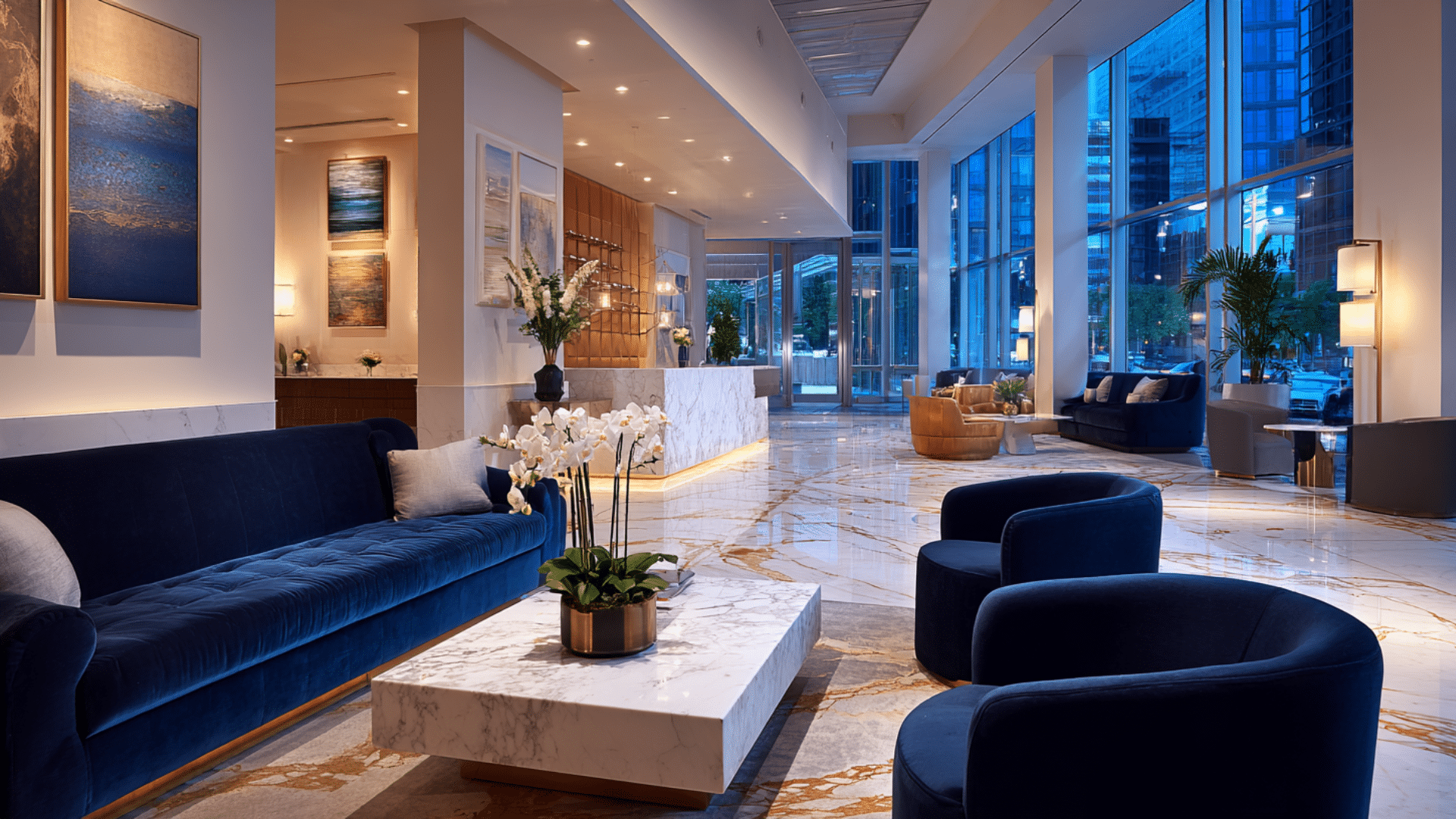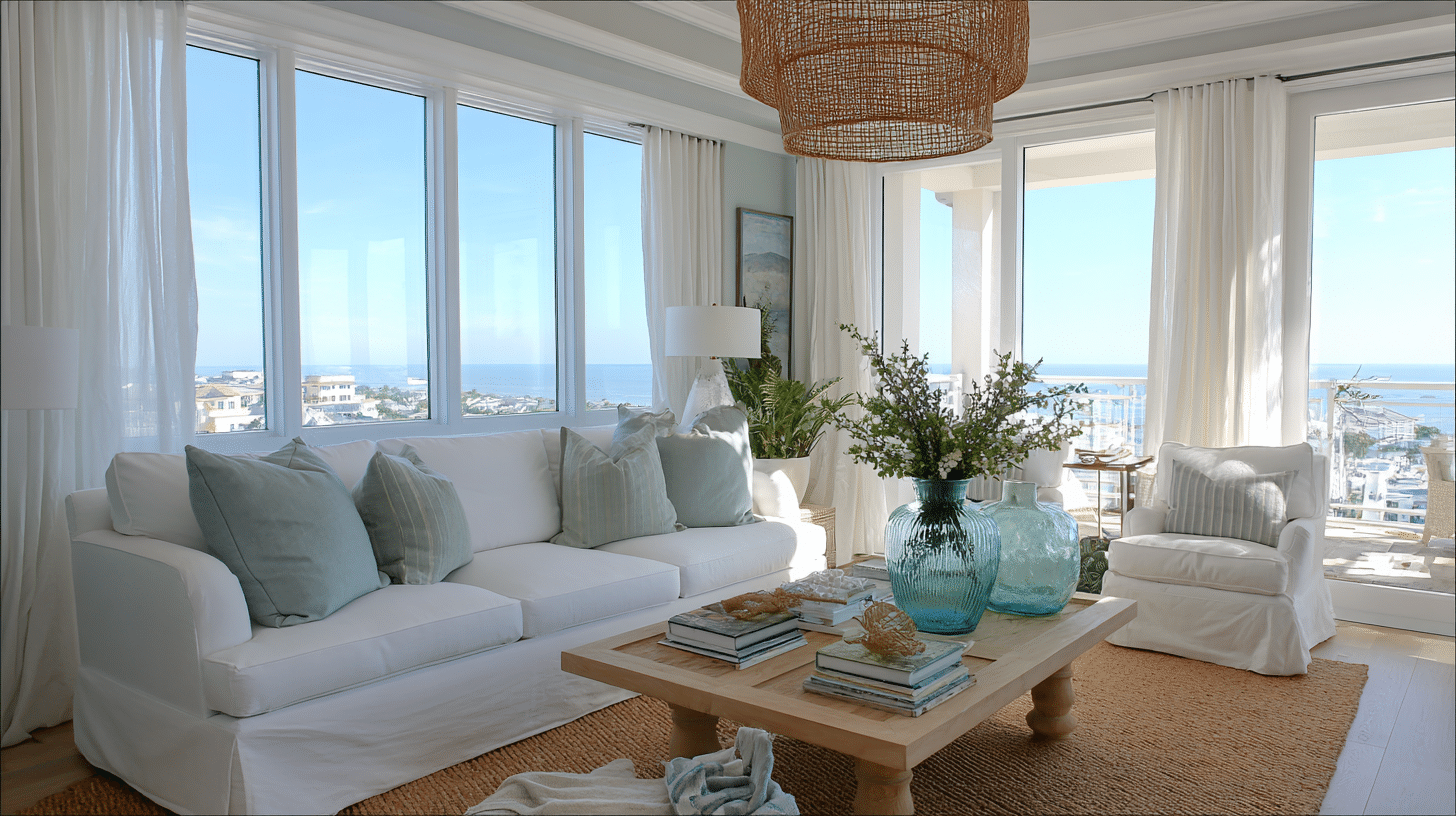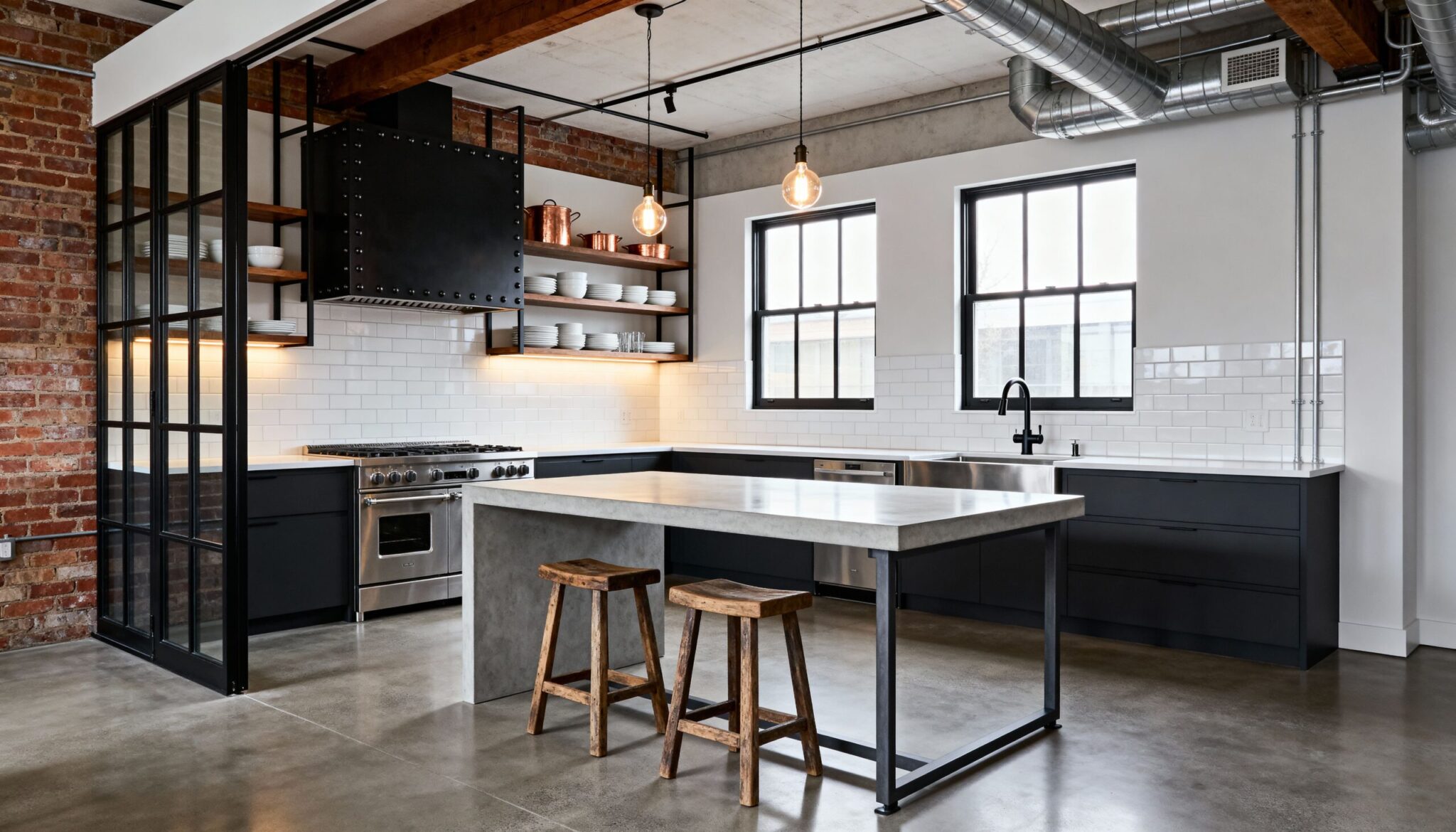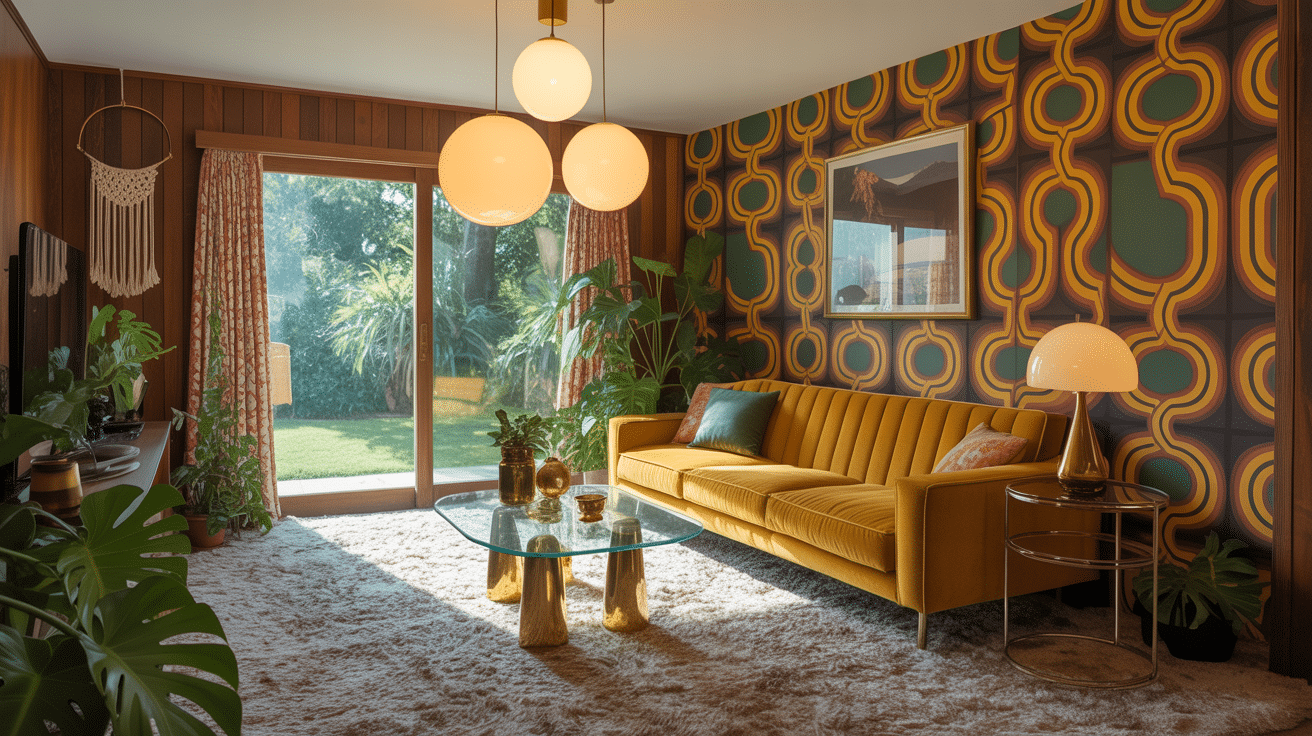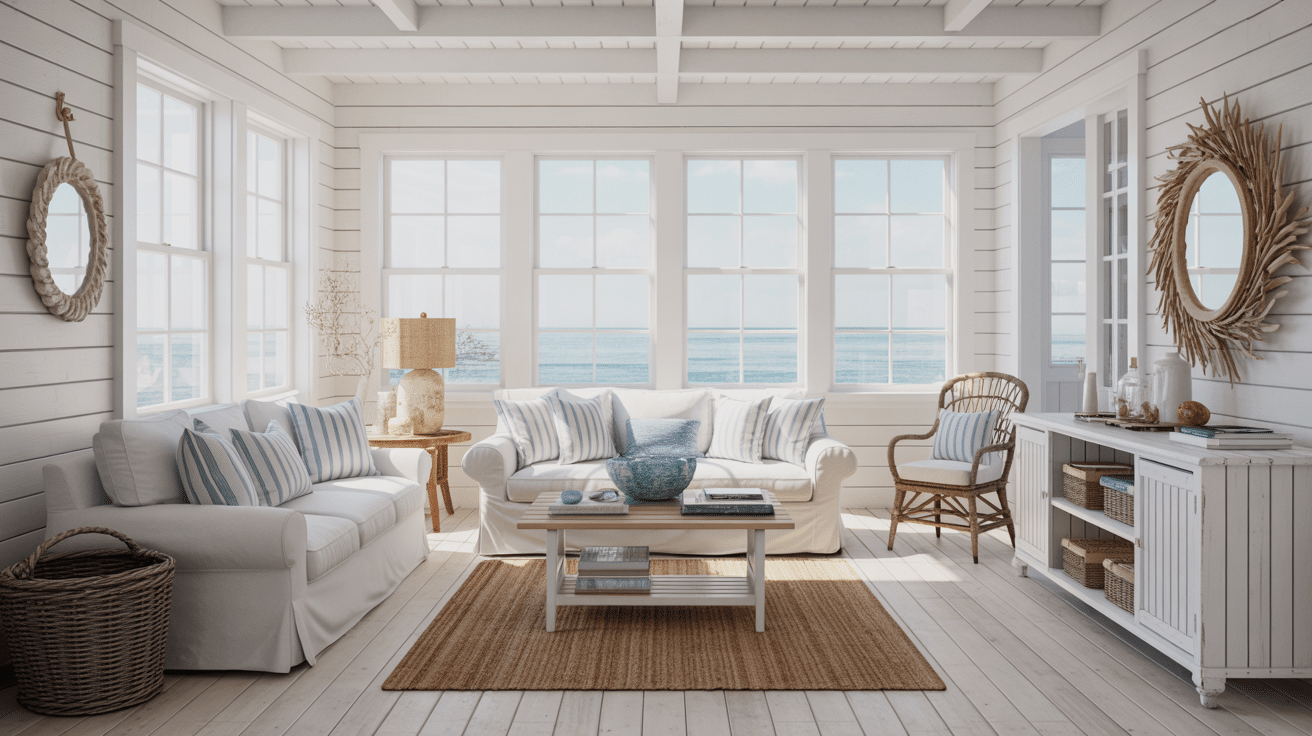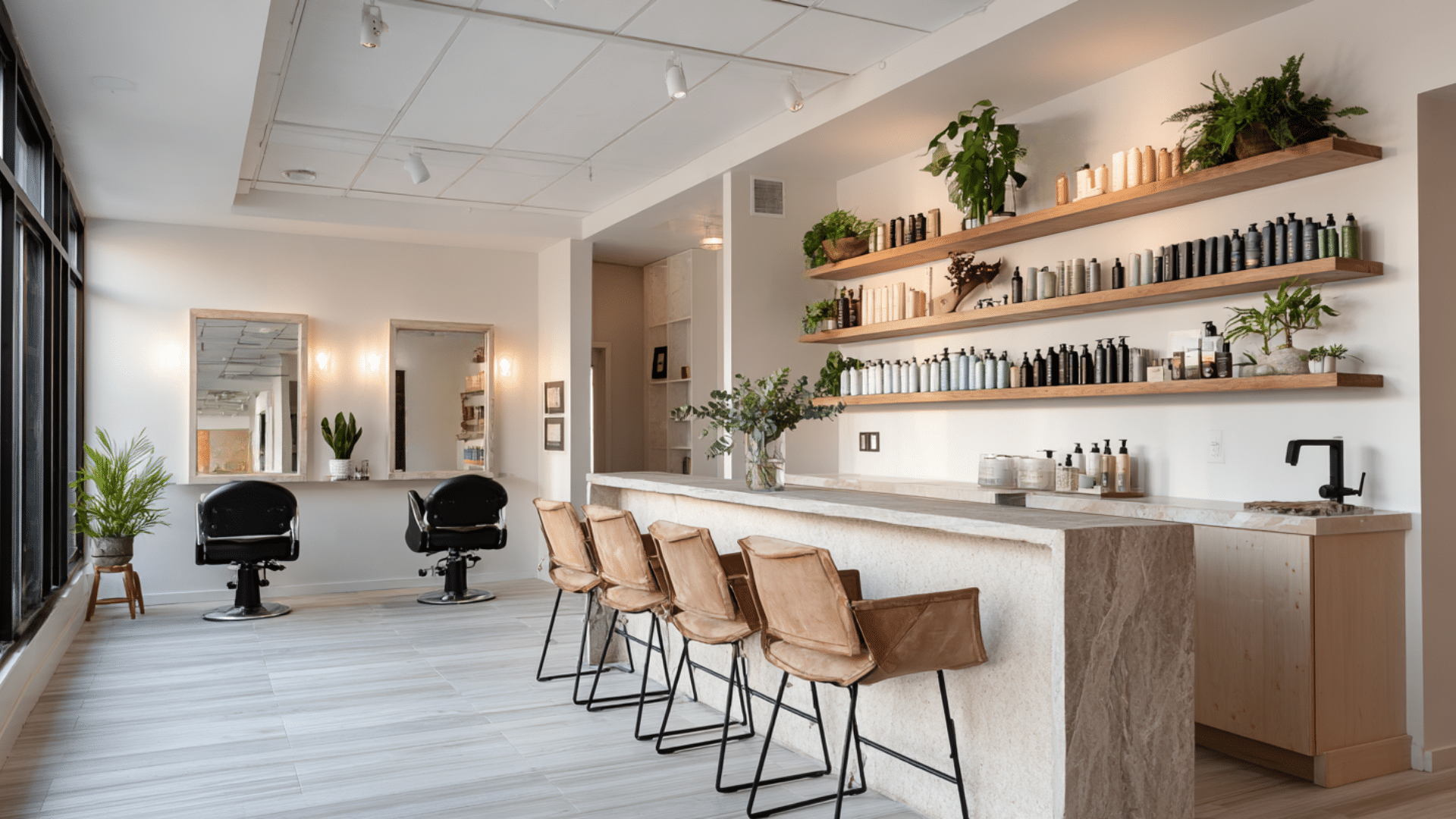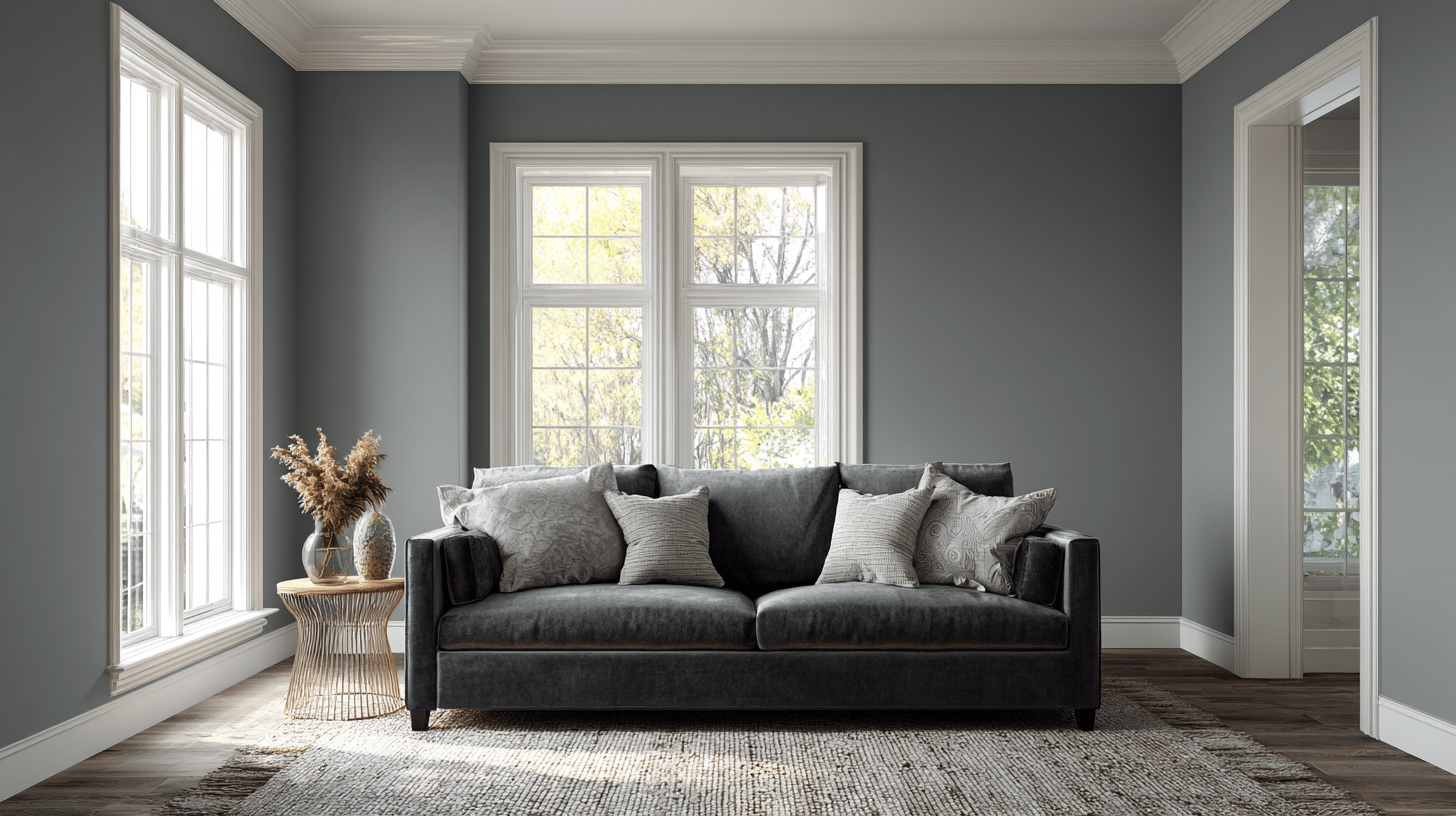Core Principles of Hotel Interior Design
Create a Strong Identity
Every corner of your hotel should reflect its unique personality. From the lobby to the guest rooms, consistent branding and style choices help guests understand what makes your property unique and different from others.
Focus on Guest Flow
Design pathways that feel natural and intuitive. Guests should be able to move effortlessly from the entrance to the elevator to their room without confusion, creating a stress-free experience from arrival to departure.
Layer Your Lighting
Combine ambient, task, and accent lighting throughout spaces. Different light sources at varying intensities create warmth and depth, allowing guests to adjust the brightness for different activities.
Choose Quality Materials
Invest in durable, high-end finishes that age gracefully. Natural stone, solid wood, and quality fabrics not only look better but also withstand heavy use while maintaining their appeal.
Balance Comfort with Style
Beautiful furniture means nothing if guests can’t relax. Every seating area, bed, and workspace must prioritize comfort while still contributing to your overall design vision.
Add Personal Touches
Local artwork, custom furniture pieces, or regional design elements create memorable experiences. These details give guests stories to share and reasons to return to your property.
Plan for Technology Integration
Hide charging stations, WiFi equipment, and smart controls within your design. Modern amenities should uplift the experience without disrupting the visual harmony of your spaces.
Popular Hotel Interior Design Styles
Here are design approaches that create memorable experiences for guests.
1. Scandinavian Hotel Design
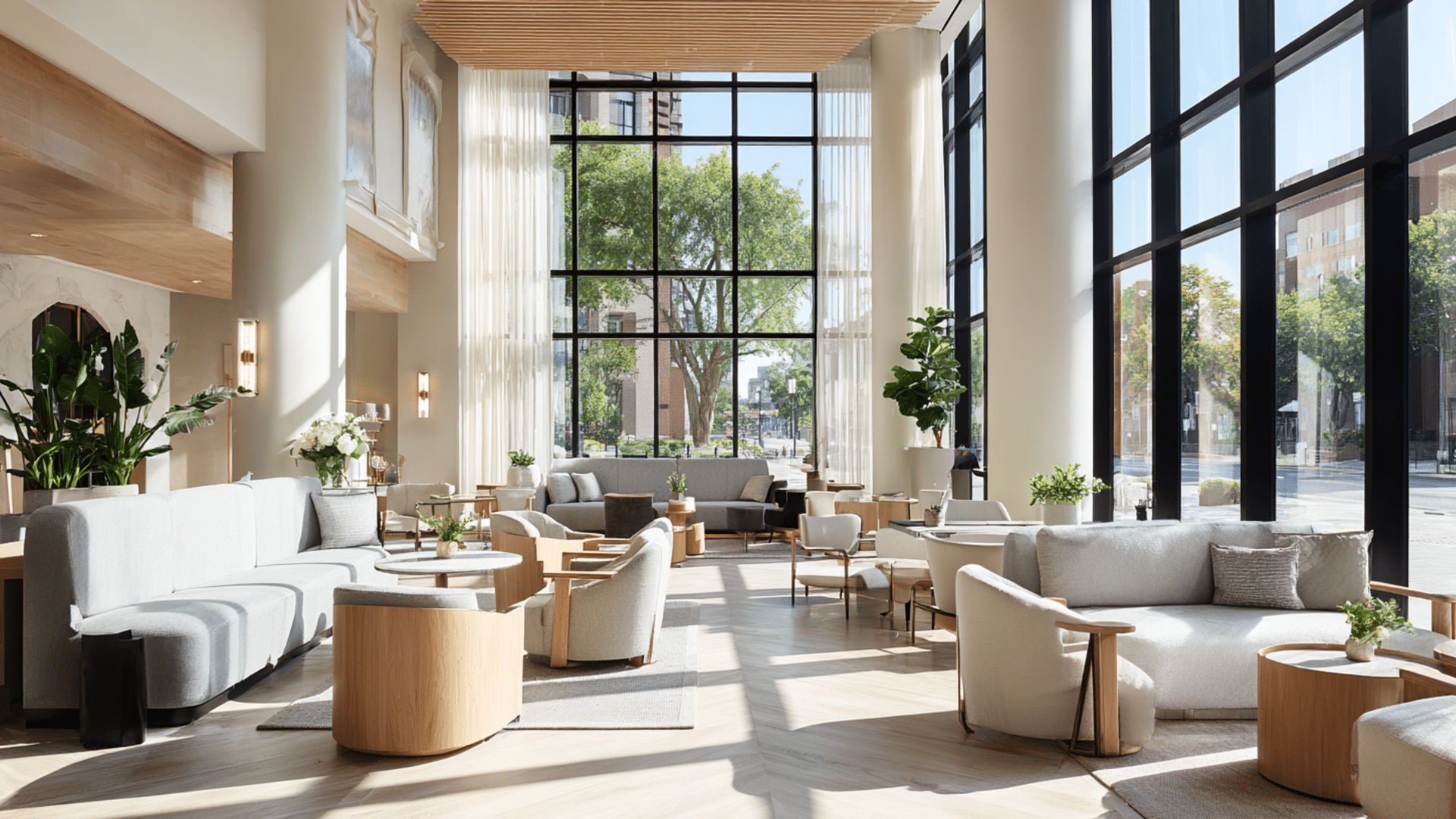
Large windows, soft colors, and wooden finishes bring in light and a sense of calm. Furniture with clean lines keeps the rooms open and simple.
Travelers appreciate the uncluttered space, as it feels peaceful and easy to settle into.
This design works especially well for travelers who value calm over excess.
2. Modern Hotel Design
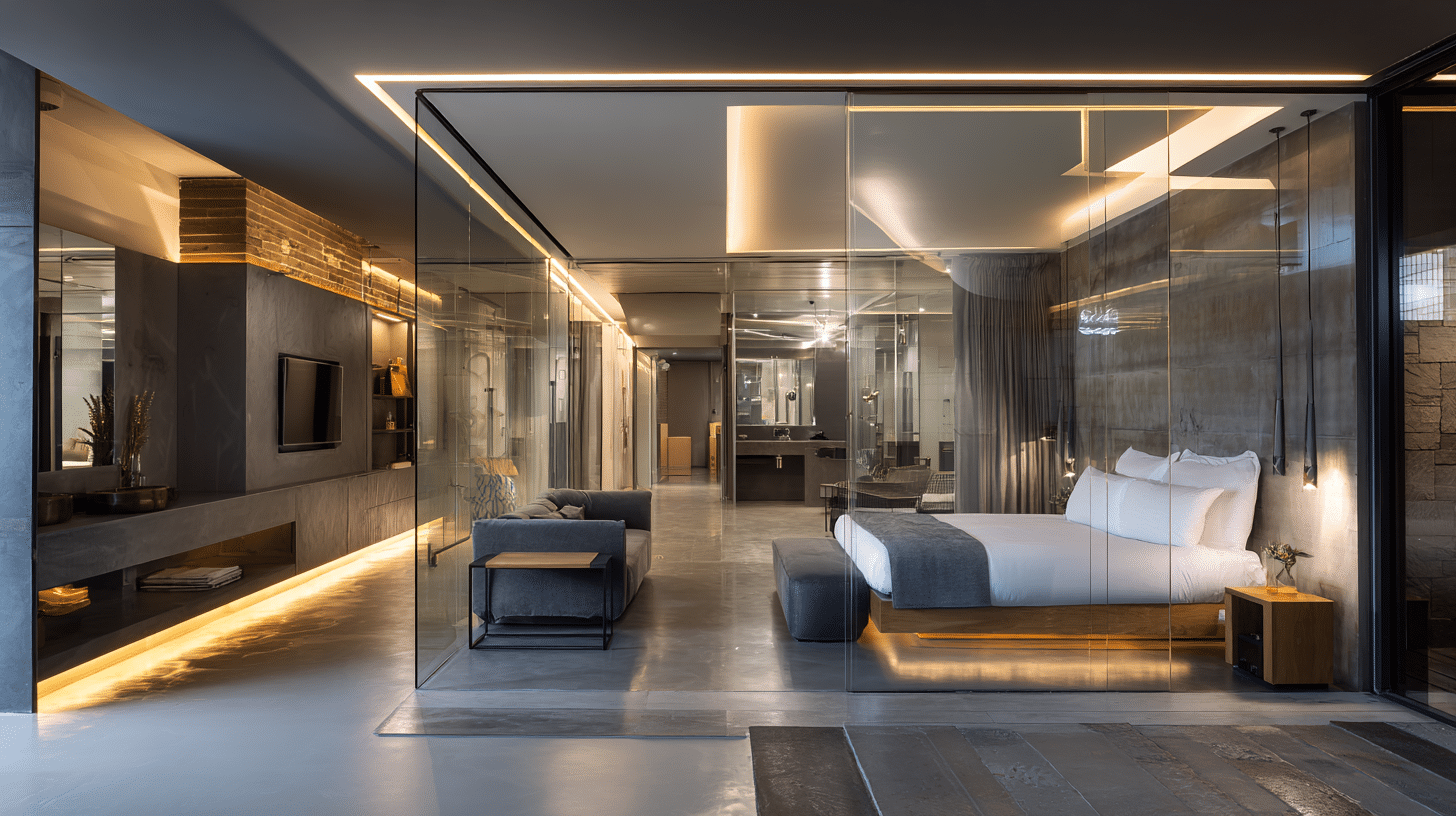
This style blends sleek furniture with open layouts and smart features. Motion-sensor lighting, built-in charging tables, and keyless room entry uplift convenience.
Guests enjoy comfort without losing design appeal.
Clean materials, such as glass and metal, create a polished finish. It shows modern hotels can be stylish yet highly practical.
3. Traditional Hotel Design
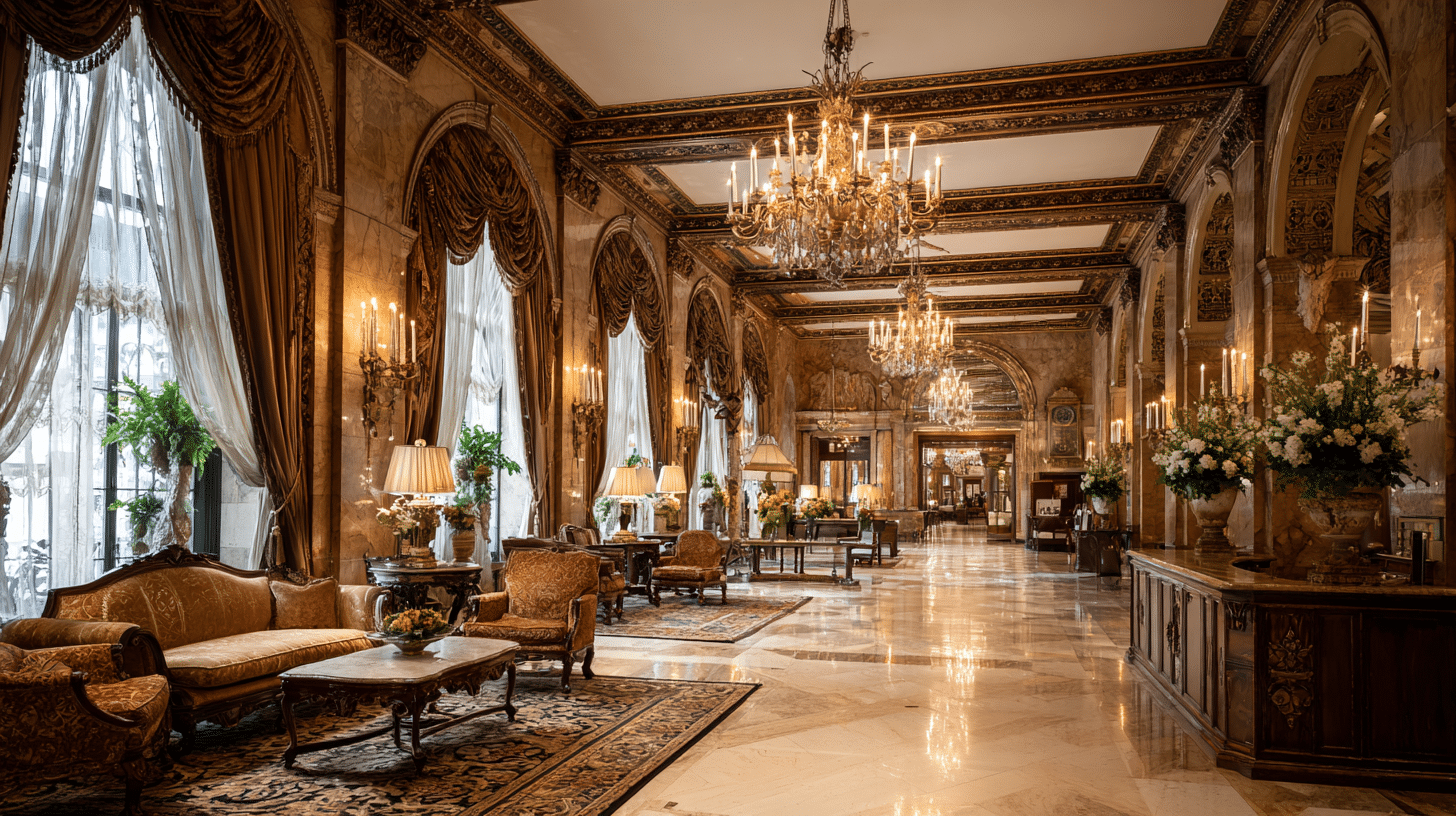
Classic hotels lean on rich textures and historical details. Chandeliers, patterned rugs, marble floors, and carved wood furniture define the style.
It feels warm and timeless, taking guests back to an era of formal design.
Travelers drawn to tradition appreciate the sense of history and detail in every corner.
4. Industrial Chic Hotel Design
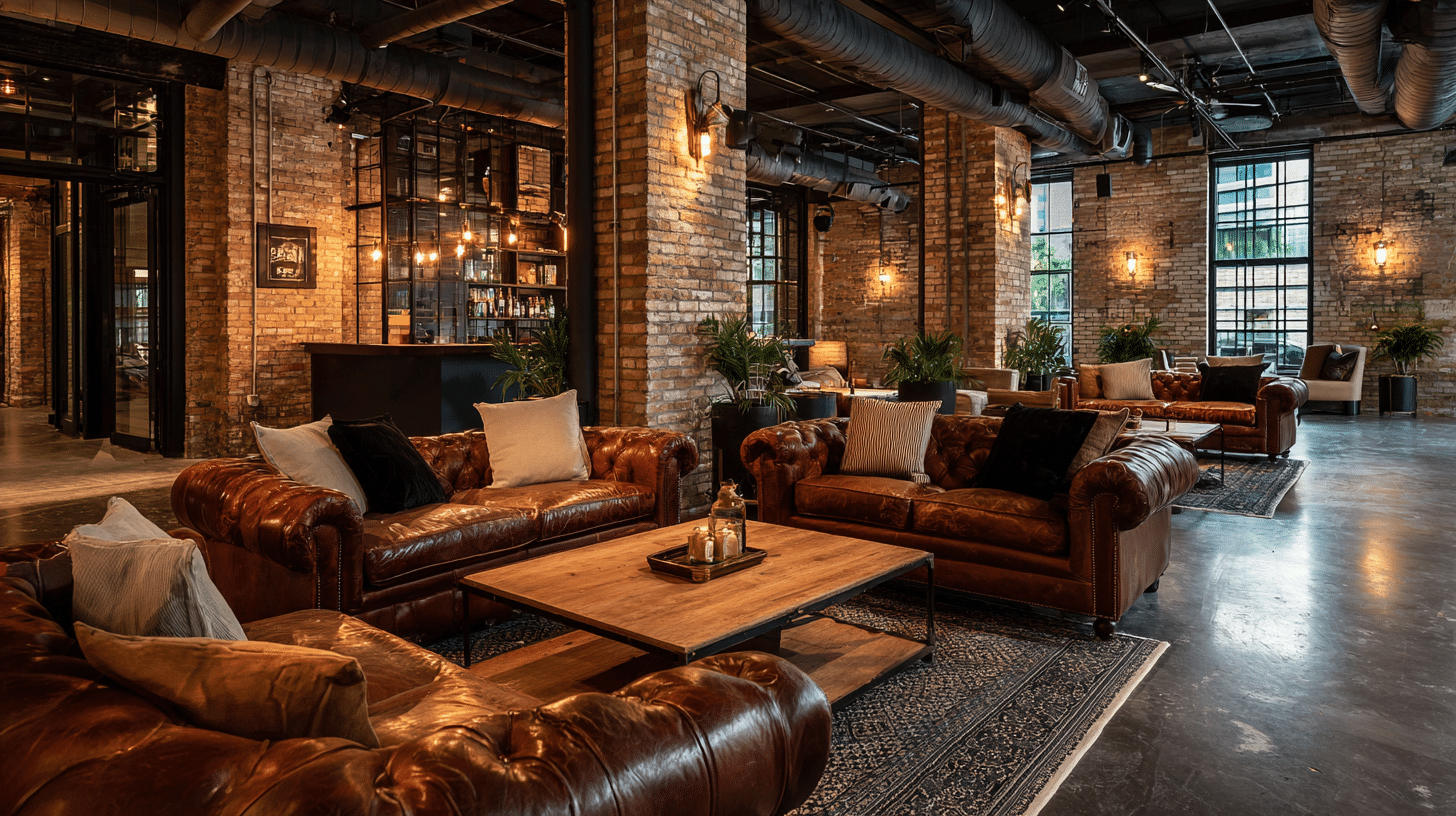
Industrial interiors often feature raw materials, such as brick walls, concrete floors, and metal beams. To soften the look, add warm lighting, plush textiles, and wood tables.
The mix appeals to creative travelers who enjoy urban energy but still want comfort. This style works well for boutique hotels in former factories or warehouses.
5. Art Deco Hotel Design
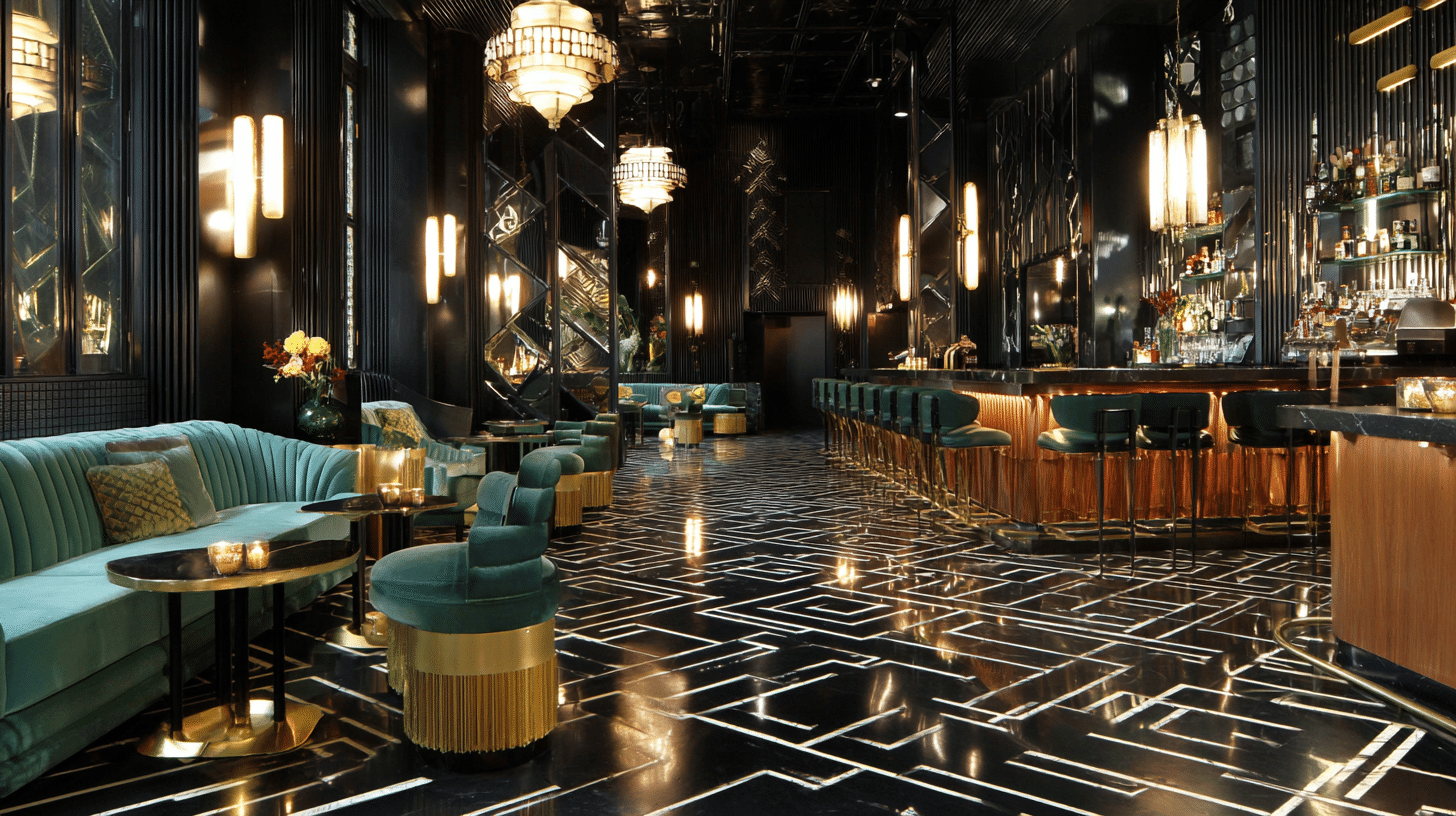
Art Deco adds glamour through bold geometric designs, polished metals, and mirrored walls. Rich colors, such as deep blue, black, and gold, combine with velvet seating.
Travelers enjoy the retro luxury that feels both nostalgic and stylish. It’s an approach that brings energy to lobbies, bars, and guest rooms alike.
6. Themed Hotel Design
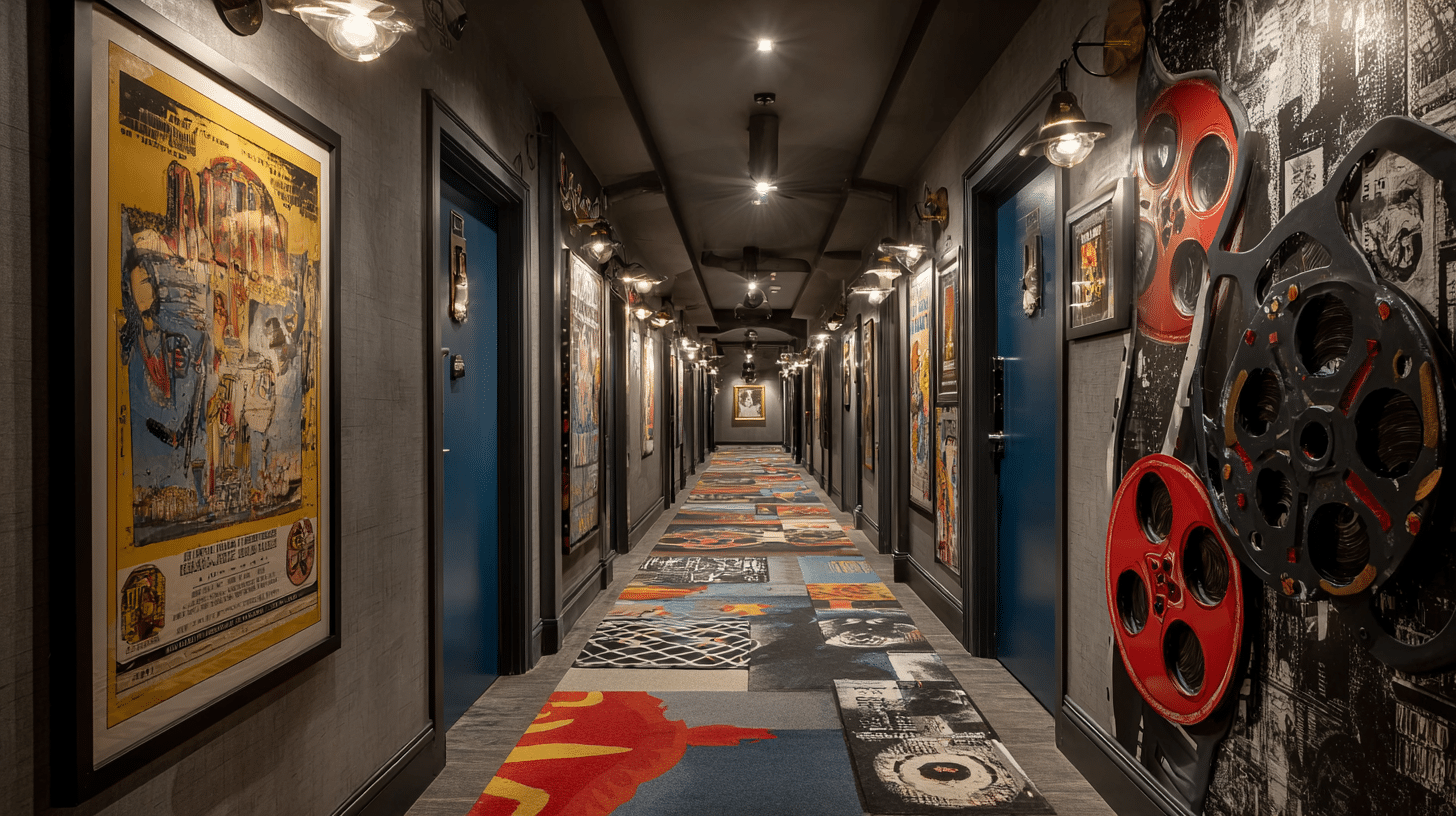
Hotels with strong themes give each stay a sense of story. Rooms can focus on music, film, or literature, with props and decor that complement the theme.
Travelers enjoy memorable experiences and shareable moments.
This playful approach helps hotels stand out while allowing guests to connect with design in a fun and personal way.
7. Site-Specific and Local Hotel Design
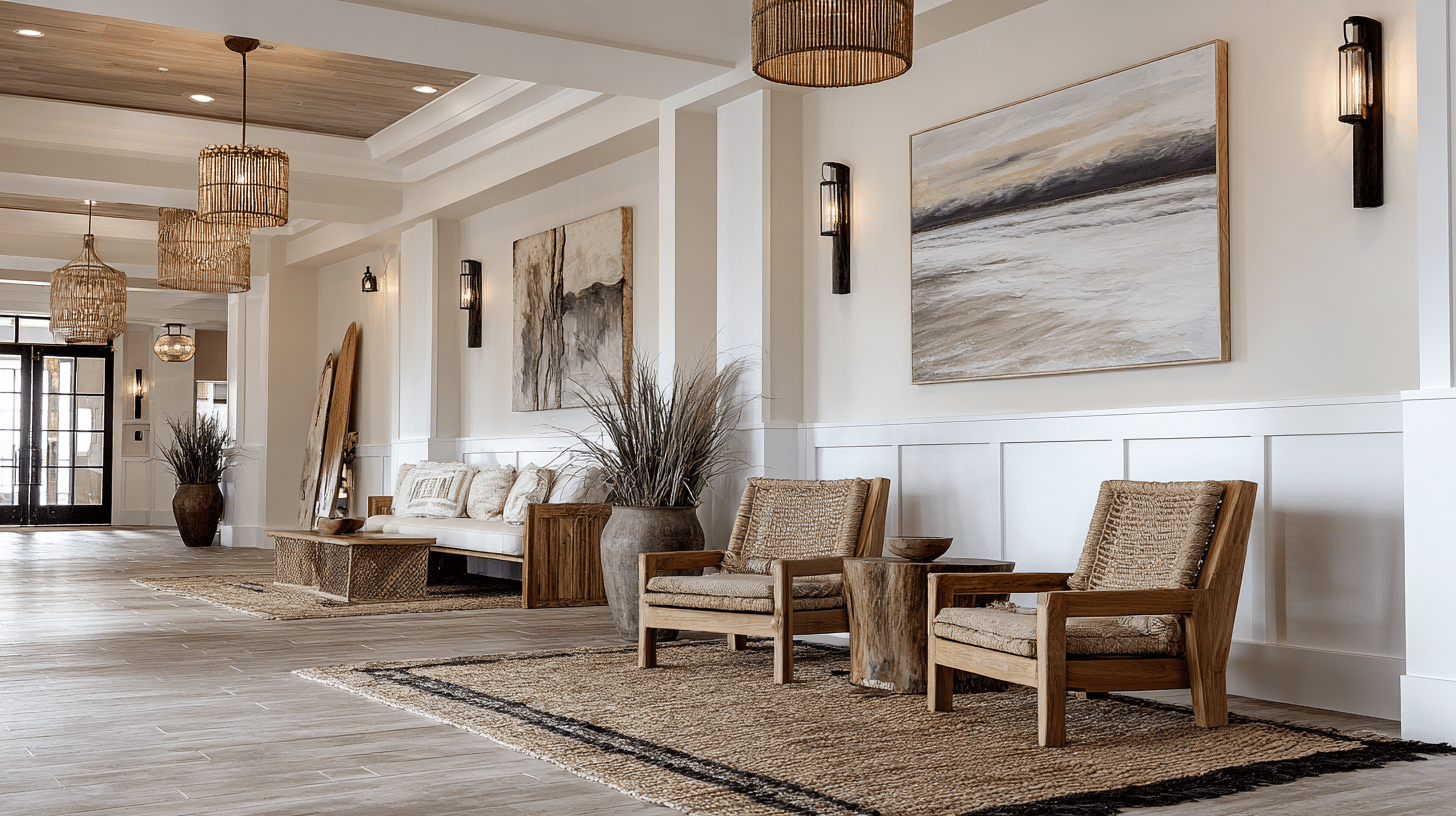
This design pulls directly from the surrounding culture and landscapes. Regional wood, fabrics, and handmade crafts appear in furniture and decor.
Local art completes the look. Guests feel a strong connection to the community and appreciate the sense of place.
It’s an approach that adds meaning while supporting regional traditions.
8. Luxury Hotel Design
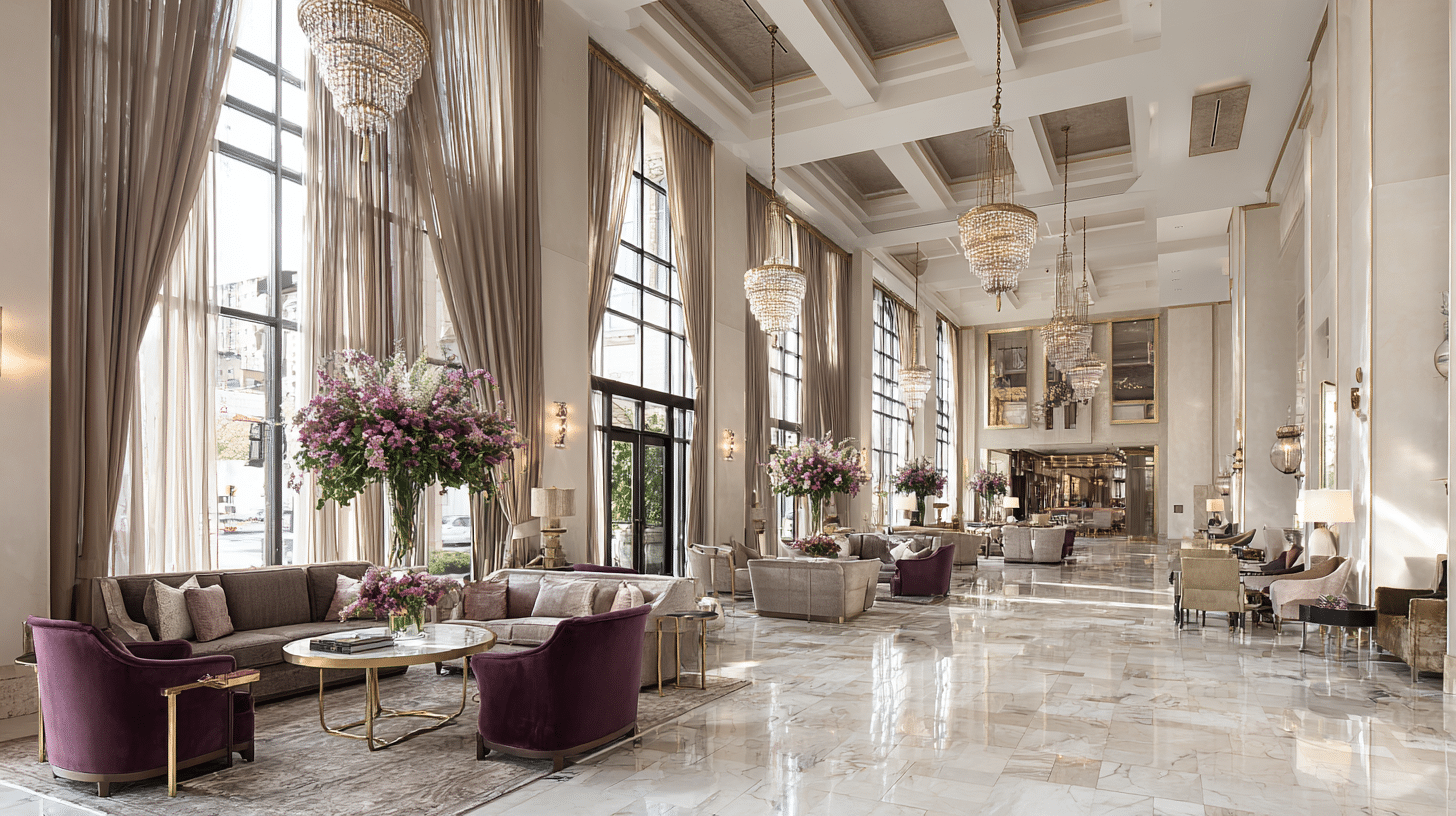
Luxury hotels emphasize grandeur with high ceilings, marble floors, silk drapes, and crystal chandeliers. Subtle color palettes create balance with these opulent details.
Travelers appreciate refined comfort throughout the hotel, from the lobby to their suites.
Every element from polished handles to fine linens signals quality, making stays unforgettable for those seeking rich, classic luxury.
9. Eclectic Hotel Design
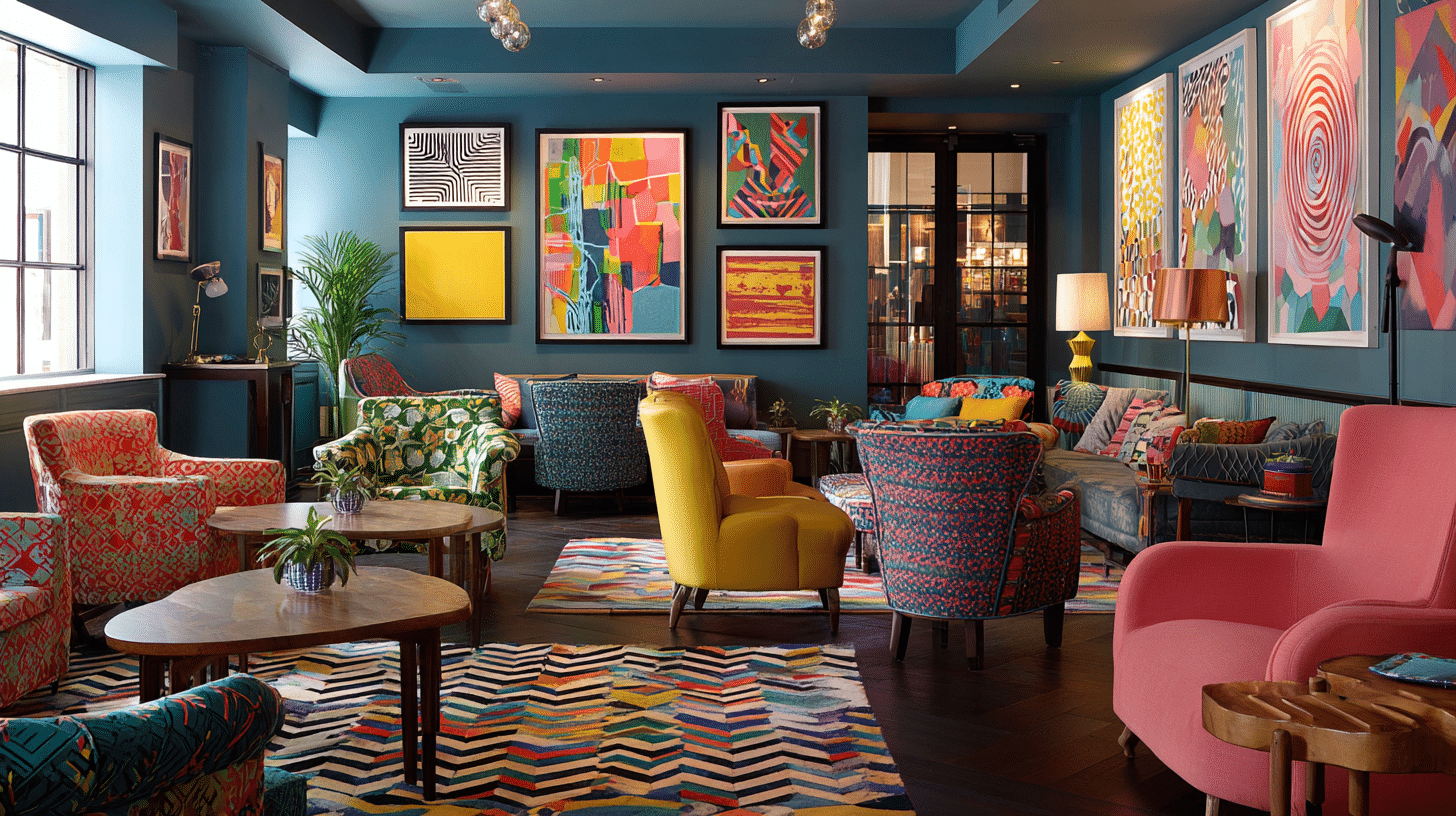
Eclectic interiors combine various styles, textures, and colors in a playful and harmonious manner.
Vintage chairs can sit beside bold artwork and patterned rugs.
Each space feels unique but is tied together with a repeating accent or color. Guests enjoy the creativity, as it feels like stepping into a place filled with imagination.
10. Biophilic Design Hotel Design
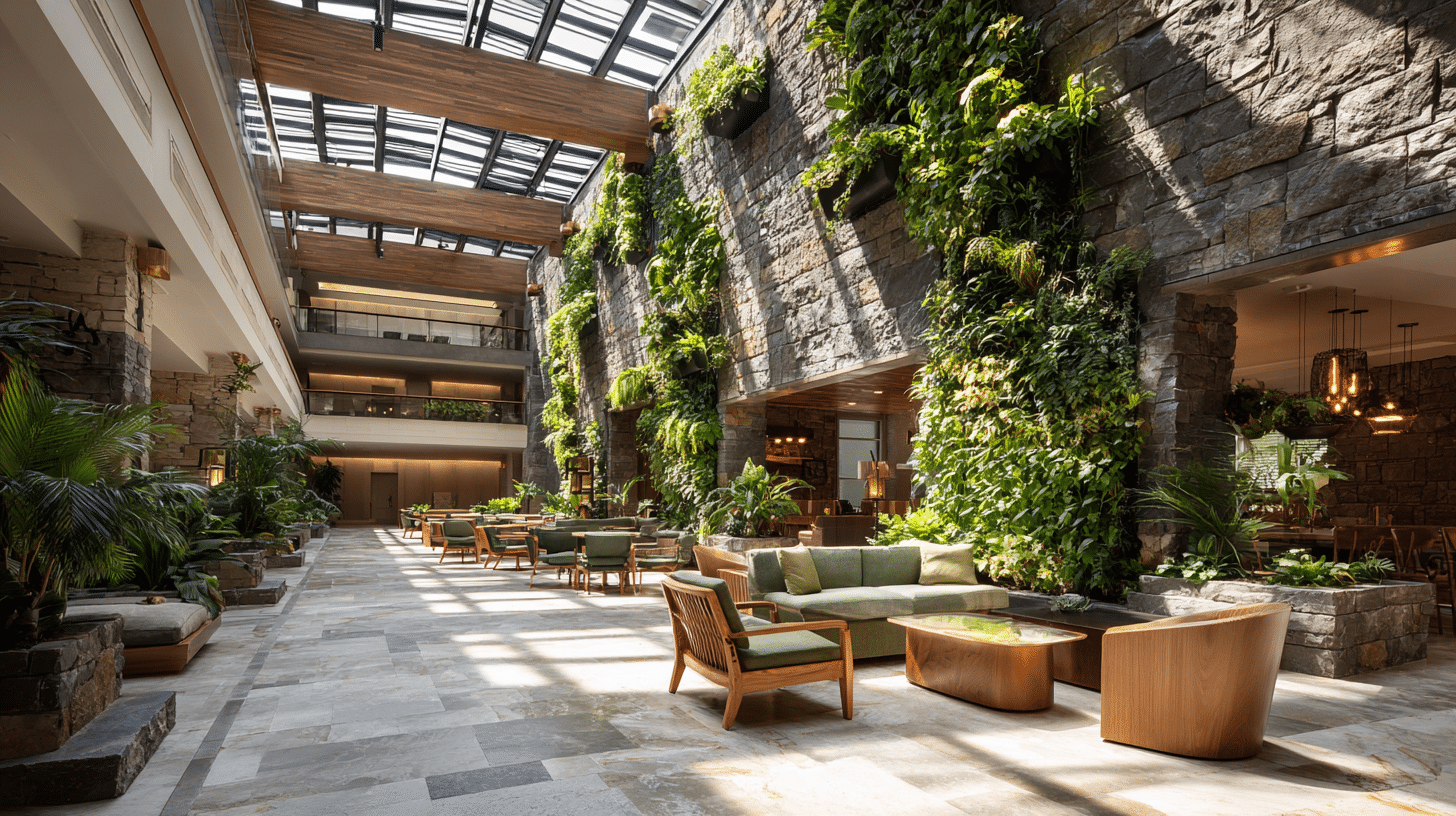
This approach brings nature indoors through the use of plants, green walls, and organic surfaces. Wooden tables, stone counters, and botanical patterns add warmth and charm.
Guests relax in spaces that upgrade well-being through the presence of greenery.
The result feels fresh and healthy, encouraging longer stays. Hotels adopting this style often become guest favorites for calm retreats.
11. Retro Mid-Century Hotel Design
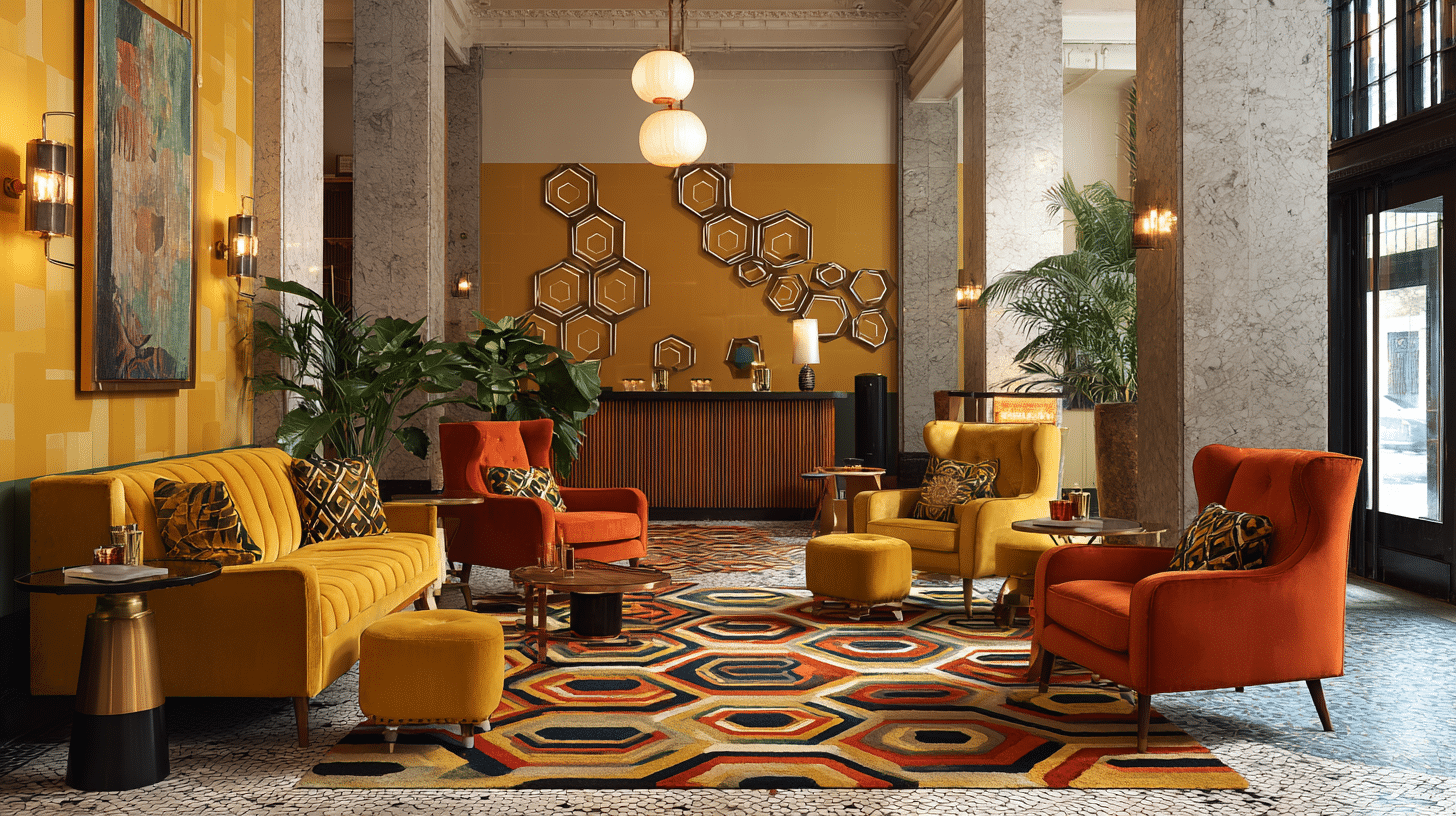
Retro hotels draw inspiration from the 1950s–70s, featuring bold shapes, teak furniture, and patterned textiles. Warm oranges, mustard yellows, and avocado greens set the tone.
Guests love the nostalgic feel combined with comfort. This style creates a fun atmosphere that balances vintage charm with practical design, making every stay memorable.
These ideas help properties stand out by offering unique experiences that chain hotels can’t replicate.
Current Trends in Hotel Interior Design
Hotel design constantly evolves as guest preferences and lifestyle changes shape new expectations.
Here are today’s most influential trends.
- Biophilic Design Integration: Living walls, natural materials, and organic shapes connecting guests with nature
- Flexible Multi-Purpose Spaces: Rooms that turn from workspace to relaxation area throughout the day
- Local Cultural Storytelling: Design elements that authentically reflect regional history, crafts, and culture
- Sustainable Material Choices: Use reclaimed wood, recycled metals, and eco-friendly fabrics
- Technology-Hidden Integration: Smart controls and charging stations seamlessly built into furniture and walls
- Wellness-Focused Amenities: Air purification, circadian lighting, and meditation spaces boost guest health
- Bold Color Psychology: Strategic use of calming blues, energizing yellows, and grounding earth tones
Hotel interior design influences guests’ experience, from the lobby to the bedroom, affecting whether they become loyal customers or one-time visitors.
Ready to turn your property? Start by identifying your unique story, then let every design decision support that narrative.

